Recently, the Royal Navy’s Carrier Strike Group deployed alongside the Italian aircraft carrier Cavour, cutting a commanding silhouette through the Mediterranean.
The display of allied naval power came at a time of heightened geopolitical tension, but as Matt Moore, Business Development Director for Maritime Autonomy at Thales, points out, the next leap in capability may come not from what sits on the flight deck, but from what takes off from it.
Moore believes airborne autonomy marks a fundamental shift. “It’s a transformation as profound as the shift to steam power or the advent of digital systems,” he said. “It’s the next revolution in maritime operations.”
At the heart of this shift is the growing need for navies to do more without simply building more. Instead of adding platforms, modern forces are focusing on increasing the intelligence, integration and impact of those they already operate. In the UK, this effort is backed by £4.5 billion of investment, and expressed clearly in the Royal Navy’s Maritime Aviation Transformation Strategy. The aim is to build “a digitally led, crewed-uncrewed operating construct that is iterative, secure and capable of delivering decisive, battle-winning effect.”
The benefits of airborne autonomy are significant. Uncrewed systems can carry out missions that are dull, dangerous or time-consuming for humans, while reducing costs and operational risk. They offer speed, persistence and the ability to reach into contested areas, extending a quantitative advantage in range and endurance into a qualitative advantage in decision-making.
But deploying these systems at sea is not straightforward. “We’re designing systems that must take off and land in adverse conditions, often on moving and confined ship decks,” said Moore. Beyond the physical challenges, there is also the task of integrating new systems with legacy infrastructure, ensuring secure data flow into wider networks, and delivering timely intelligence to operators without delay.
For Thales, the solution lies not in more kit but in more compatible, capable systems. Moore highlights four key enablers: interoperability with existing combat systems, AI-driven data processing at the edge, robust cybersecurity by design, and training that supports both operators and machines in working together effectively.
A practical example is already in service. Peregrine, a rotary wing uncrewed air system, is flying operational missions alongside Wildcat helicopters in the Gulf of Oman. Deployed from HMS Lancaster, it provides persistent surveillance during nighttime interdiction operations, particularly when smugglers are most active. With Thales’ I-Master radar, Peregrine can see up to 180 kilometres and scan 800 square kilometres per hour. In one operation alone, it supported the seizure of over £5 million worth of heroin and methamphetamine.
“It’s replacing eyes that get tired and giving reach where there wasn’t any before,” Moore said. More importantly, Peregrine is building operational confidence. It has moved beyond trials and white papers, proving itself in deployments and contributing to frontline missions. Thales continues to iterate the design through exercises like REPMUS, trialling new payloads and refining its integration with combat systems.
With airborne autonomy maturing quickly, Moore sees a clear path ahead. “The intent is there. The investment is there. What’s needed now is the technology that commands can trust, and a mindset across defence that’s ready to adopt it.”
As the Royal Navy and its allies continue to push into the future of maritime operations, systems like Peregrine are already showing what that future looks like.


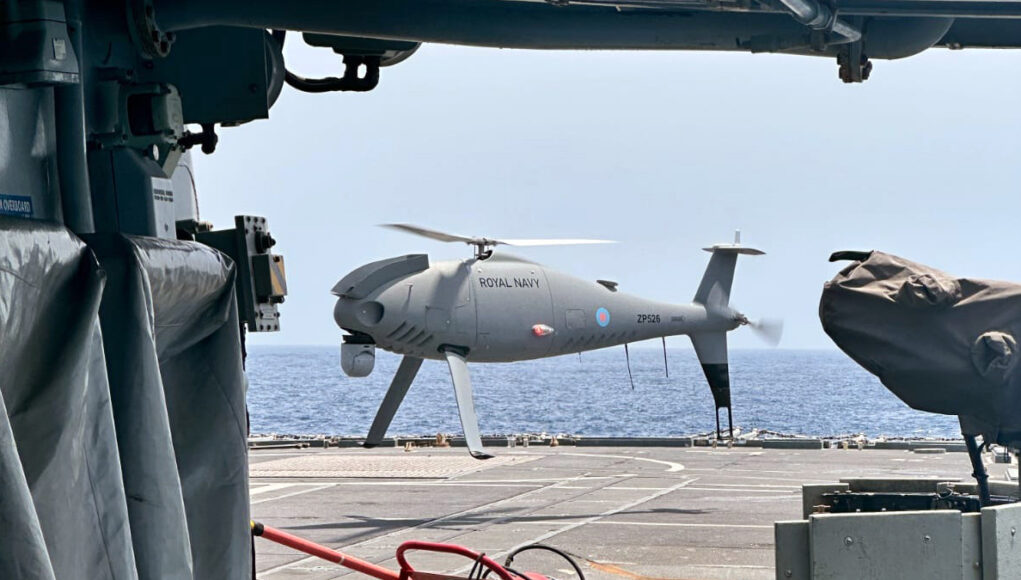
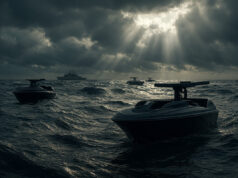
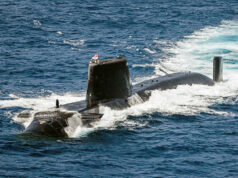
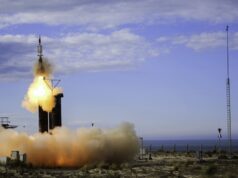
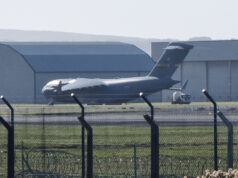


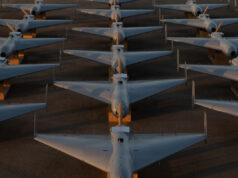

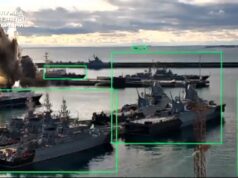


“The next leap in capability may come not from what sits on the flight deck but what takes off from it”
Deary me .
I have to agree, it was a half-witted comment. Bur tbh most of what was in the article wasn’t much better, talk about a lot of fluff, hot air and obscuration through a tulip field of meaningless flowery language. The only message I got (which reflects a lot of our fears) is that we can’t afford much new kit, certainly soon, so we have to make the most of and get more out of what we have got, hoping we don’t notice it’s so far relatively minimal kit operating off of a few ships, it’s not so much what they are doing that makes me cynical it’s just the insult to the intelligence in all the long winded over hyping and spam speak.
It’s like Angel Delight, all fluff and no substance.
I sometimes think I’ll join the masses and watch Love Island instead of coming to sites like this to read stuff like that.
(Pulls up comfy chair, waits for the grumpies to turn up !) 😁👀
I like Angel Delight!
If you eat a whole package of angle delight that is 400 calories..that’s a lot more than fluf and no substance.. infact if you treat angle delight as having no substance you will be a fat walking Heart attack in no time.
Ahh, well I guess it really does pay to read the label properly then !
What about Pringles ? I do like the sour cream and chives, have a sneaky suspiscion they might be a tad unhealthy too.
Basically Pringles are drugs…. They are created to hit the bliss point and change the chemical makeup of your brain so you “just can’t stop” may as well just crack on with opioid drugs.
Really profound stuff, someone thought that sounded better than it did.
It’s merely a jumble of words that look good untill closer inspection.
So Peregrine has made it onto one vessel.
After how many years of trials and studies?
I recall we don’t own it either.
Yes, the Jam has finally arrived 😀
If ukraines drone program had gone so slow they would not have a country.
Nothing like being down in the tube station at midnight… I’m going underground.
ha. “I don’t care what society wants”
Love it.
Better than be out on hills playing little toy soldiers.
DB, Or out in a town called Malice where they are often seen Eaton Rifles.
We live in a strange town. Although the British Military is almost on the funeral pyre.
They really are missing the fact that the single most important thing to develop is the doctrine and to develop doctrine you need mass deployment. It’s all very well living in a continuous development loop for the capability, but if you never imbed it in the organisational culture and learn how to use it day to day in operations..is just a bit of window dressing.
“War is a game of numbers”.
Yep in the end it all comes down to how many you have and how many you can get vs how many are destroyed and on the other side how many you can destroy vs how many your enemy has and how many they can get.
Peregrine made it on to HMS Lancaster. Except has it?
Peregrine is made up of a number of elements, including the S100 Camcopter, the Thales I-Master and the CarteNav AIMS mission system, all integrated into Lancaster’s systems. Although we have seen flights of the Camcopter, I don’t recall seeing photos of it running with the I-Master, nor any reports that it has. If they want to get the system working to its potential, even for a couple of months, they need to get their skates on. Otherwise we’ll have a long wait before someone makes the call to start over again on a new ship.
Didn’t we used to have amphibians on our Cruisers in the 30’s and 40’s. These were removed when we had Radar and Carriers galore. That reduced the importance of cruisers to shore bombardment and escorting the carriers and was a retrogressive step from which helicopters were part of the solution as they became available in Frigates and Destroyers which have now become defacto cruisers! I think the way forward are through deck small carriers with Catobar and midsized drones; yet we seem reluctant to take that course.
Catobar carriers should still be the best aproach to launch an aircraft with heavy payload and long range.
And if one is constrained by limited deck availability, like on frigates, perhaps checking out capabilities of alternatives to helicopter, to foy further and higher. The V22 is funny, but costly, because managing the natural instability of this configuration is expensive, not very safe, and the efficiency of the formula, while offering some benefit, is not ideal. Other formulas are emergent with vertical take off, wings and push pull configuration, like Ascendance or others. They offer natural stability in flight, are cheap, provide the VTOL capabilities needed and are not constrained by the 400 km/h suffered by rotary wings.
But what do we want to achieve with these persistent systems after all? A fleet of satellite, or of pseudolyte could offer the discovering devices needed by a frigate. What is it that is really needed flying from the frigates deck? And how fast and persistant do you want it to be…
I’m sorry, but when you’re already woefully short of “platforms” and the shit hits the fan, then no amount of digital doo-das is going to make up for your lack of surface combatants and combat aircraft!
More than anything the naval domain is open to drone warfare. But a different type of drone warfare than on land.
Land demands small cheap disposable drones that are by nature essentially expendable products. Distances are short, space is confined, threats are everywhere and overwhelming so thie life of a land based drone is short in both time and distance..with engagements on land being in the hundreds of meters. But at the same time the environment itself is generally benign, it’s easy to land, sheltered from the worst atmospheric/weather conditions and environmental contaminants ( salt water)..so it the enemy trying to kill it not the environment.
The maritime environment is both simple in that it’s open and has almost no threats, but complex in that distances are vast..100s to 1000s of kilometres instead of 100s of meters and the environment is adverse, landing and taking off is massively dynamic, the atmospheric/weather is far more adverse and changeable than on land and the environment is full of contaminants that destroy machinery.
This means of the two the maritime environment calls for large more stable and less dynamic drones than the land environment. With probably the most important element not being the chasing of shining new “this years drone” but actually a really good answer solid doctrine across the fleet.
So buy a long range heavyweight vertical drone and deploy the things.
Mr Moore wrote the article and it’s a bit of an advert for his firm obviously.
Why we have not bought more Peregrines is not a mystery to me as they cost money. Doesn’t seem to matter how much money to be honest, but buy or lease just one and it’s easy to.make grandiose claims as to what you ate doing for our armed forces. “Leading the world” with a product that has been on production for a decent number of years as far as I know.
Its a no.brainer to buy more for the apparent level.of capability they already have but…(fill in usual comments here).
Drones…( fill in usual comments). Hype…( fill in usual comments).
Sigh. AA
We haven’t bought any, and seem barely capable of operating the two we have leased.
The issue is that we are ridculously slow to integrate and test. There’s been a lot of money spent this round (~£25m) for very little apparent progress on what was an Urgent Operational Capability. I agree that if we are incapable of scaling up there’s not a lot of point in buying the kit. However, that means we need to get better at scaling up, not that we should be content with too few drones.
I completely agree. There is a clear need for a larger unmanned aircraft capable of carry more fuel and larger payloads (e.g. launched effects) that can be deployed for 10ish hours. But it to be a successful force multiplier it needs to be easy to operate, maintain and integrate. Many of the UAVs today take more crew and maintainers to keep in the air than traditional manned aircraft, so what’s the point! We need semi/fully autonomous UAVs that can be teamed / tasked by a single operating crew.
Rather than having an unmanned wildcat, 3 times as many simpler and more attritable UAVs with more specialized sensor and payload packages that can work together. Having a UAV with a powerful radar that can loiter at high altitude and feed radar data to nearby UAVs with EO/IR and ESM capability and vice versa.
Smaller chocks and lashings Smac 233 will be a doddle
Peregrine is showing the RN what the future looks like. For everyone else, the S100 Camcopter showed them what the future looked like in nearly two decades ago, with the first deck trials in 2007.